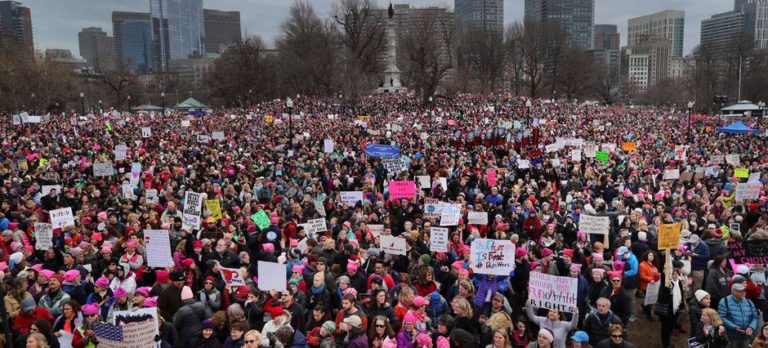The evening after Donald Trump was elected president, Teresa Shook got some friends near her home on Maui to show her how to create an event on Facebook. Although usually not very political, she was so upset with Trump’s election that she decided that there should be a march on Washington after the inauguration to protest it. When she went to bed she already had about 40 people coming and 40 maybes. When she woke the next morning it had exploded to 10,000 coming and 10,000 maybes.
On Saturday it resulted in the single largest day of protest in U.S. history, with millions of people in the streets – and many more in cities around the world.
Many, many people hope that their social media posts will go viral, but it’s very, very rare. After all, the competition is immense. Facebook users post four petabytes (aka four million gigabytes) of new information every day. Hundreds of hours of video are uploaded to YouTube every minute. Thousands of tweets are posted every second.
Usually it takes a “big seed” – paid ads or a major PR coup – for something to go viral. The ALS Ice Bucket Challenge took off after it was featured on The Today Show. And no doubt the organizing for Saturday’s marches was aided by free media coverage. In many cities attendance was double what was expected just a week ago.
Trump is the Twitter President and says it allows him to bypass traditional media to reach people directly. It’s not unusual for a single Tweet of his to get over 100,000 Likes and retweets. The reach of his tweets is greatly amplified by free media coverage, too.
After Barack Obama’s re-election in 2012 Donald Trump tweeted this:

Why the difference?
First, of course, the circumstances were different. 2012 saw the re-election of a sitting president with a clear majority. 2016 represents a dramatic political change of course, with a new president who lost the popular vote by almost three million votes. I don’t think it’s being partisan to say that Trump, who routinely says “I don’t have the time to be politically correct”, is deliberately confrontational; many people have strong reactions to him.
Critically, Theresa Shook created her event on Facebook. Donald Trump tweets. The two platforms are very different.
The average life of a tweet is about 30 minutes. The average life of a Facebook post is a couple days.
Facebook has tools to organize events. Twitter does not.
Twitter is good for headlines, quick news, and opinions, but it’s not so great as an organizing tool. Facebook is the place for that. (Facebook also has tools for groups, virtual yard sales, and other activities that you wouldn’t do on Twitter.)
And Facebook has over five times more average monthly users than Twitter.
The women’s march spawned hundreds of local versions; it would not have been as big a deal if it had only been a march with several hundred thousand people in DC. The local marches allowed millions more to come out. It became a major local story worldwide. Facebook is an ideal platform for that, too.
Pinterest would also be a terrible social network for organizing a rally. Or Instagram. But they have things that they’re great for that Facebook is not.
Social media is open to anyone. It’s rarely effective for convincing or converting, but it can be very effective for mobilizing supporters. Sometimes it does only take a single spark to light a prairie fire.
If you choose your tools wisely.
Did you think this was interesting? Then sign up to get our daily email marketing tip that people call “very impressive and helpful”
